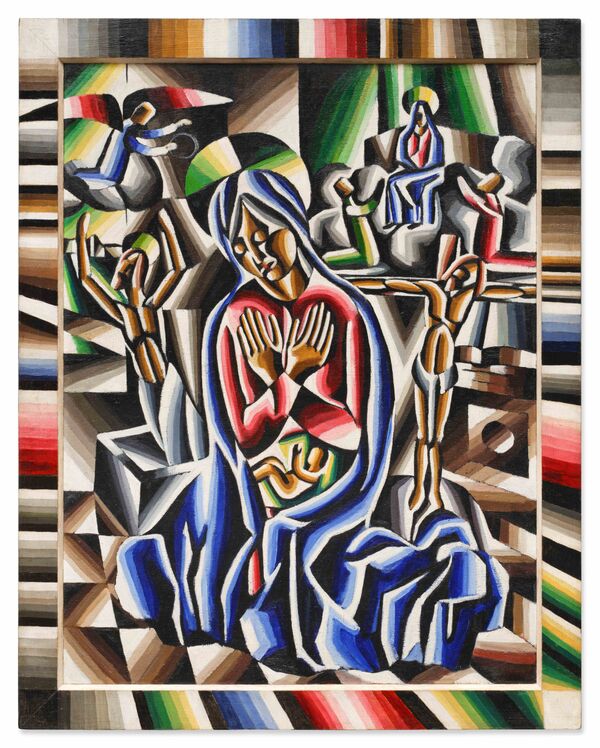Arthur Segal
(1875-1944)
The Romanian artist Arthur Segal was born into a Jewish family in Iaşi in 1875. Beginning in 1892, Segal studied at the Berlin Academy and later the Academy of Fine Arts, Munich until 1896. In the early 1900s, Segal also travelled to Paris and Italy to study.
Afterwards, Segal moved to Berlin in 1904 and began exhibiting with the German Expressionist groups Die Brücke and Der Blaue Reiter, eventually co-founding the Neue Secession group with Emil Nolde and Karl Schmidt-Rotluff among others, in 1910. Upon the outbreak of war in 1914, Segal sought refuge in Ascona, Switzerland with his family where he remained until 1920. During this time, he exhibited some of his work with Hans Arp and followers of the Dada movement at the Cabaret Voltaire in Zurich.
Segal moved back to Berlin where, three years later, he founded his own painting school called the November Group. As the Nazi regime rose in power in Germany it became impossible for Segal to exhibit his work due to his Jewish heritage. Given no choice but to move, Segal relocated to Palma, Mallorca in 1933 where he would stay until the break out of the Spanish Civil war in 1936. He then immigrated to London, where he would stay for the rest of his life. Here, he founded another art school – the Arthur Segal Painting School for Professionals and Non-Professionals – together with his daughter Marianne. In 1944, he passed away of a heart attack during a bombing raid on London. After his death, his wife and daughter continued running his school until 1977.
Segal’s works are difficult to categorize stylistically, as the works he produced throughout his lifetime show influences of a variety of artistic movements from expressionism to naturalism. He was a firm believer in the moral and healing power of art and wanted to impart this belief on his students. Besides painting, Segal also produced woodcuts from 1910 many of which were anti-war themed. Moreover, he wrote many books, articles, and often gave lectures.
Today, Segal’s work is represented in the collections of many renowned institutions, including the Museum of Modern Art in New York and the Tate Gallery in London.

